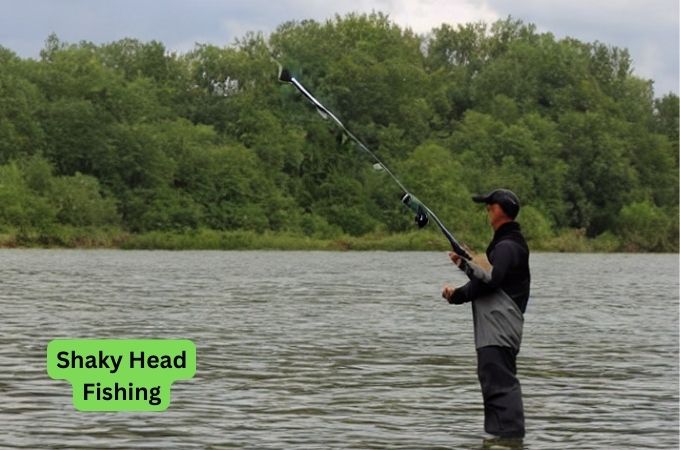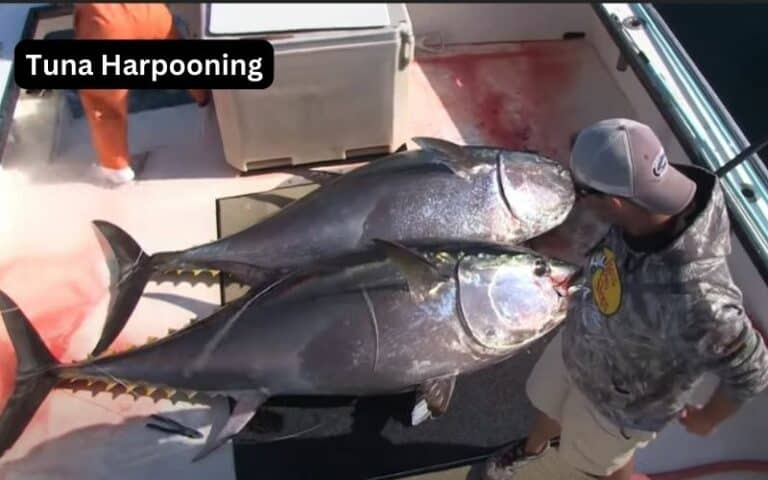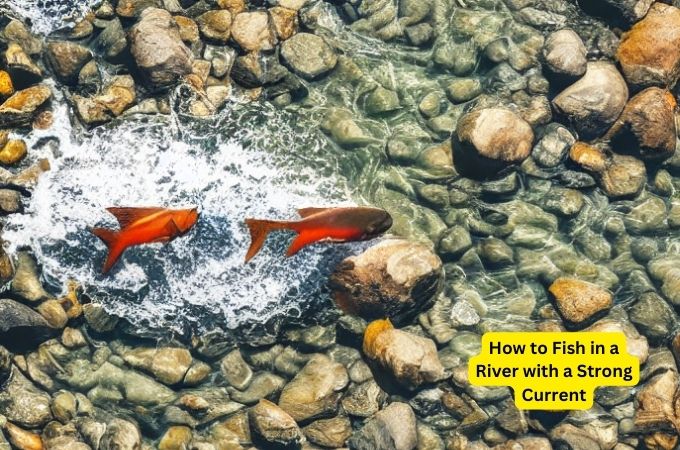Choosing The Best Line For Your Baitcaster
Today we discuss Choosing The Best Line For Your Baitcaster. Interested in enhancing your baitcasting skills? Curious about the most suitable line for a bait caster? You’re in for a treat! In this guide, we’ll explore the realm of baitcasting lines and assist you in discovering the ideal choice for your fishing requirements.
Whether you’re a novice or an experienced angler, the selection of the correct line can significantly influence your casting range, precision, and overall fishing achievements. Let’s cut to the chase and steer you towards mastering the art of baitcasting!
Best Line to Use on a Baitcaster:
Selecting the correct line is essential for maximizing performance and success when using baitcasting reels. Factors such as fishing type, targeted species, and personal preferences influence the best line choice. This guide covers various line types to assist you in choosing the most suitable one for your bait caster.
Monofilament Line:
The Monofilament line is a popular choice for bait casters due to its versatility and affordability. It is made from a single strand of nylon, offering excellent knot strength and manageability. Here are some key features and benefits of the monofilament line:
- Low memory: Monofilament line has minimal memory, which means it holds fewer coils and is less likely to backlash on your bait caster.
- Abrasion resistance: Monofilament line is relatively durable and can handle rough underwater structures without breaking easily.
- Shock absorption: Monofilament has some elasticity, providing better shock absorption during hooksets and reducing the chances of losing fish.
- Visibility: The monofilament line is available in different colors, allowing you to choose a suitable option based on water clarity and fishing conditions.
While the monofilament line has many advantages, it also has some limitations. It tends to stretch more than other lines, which can reduce sensitivity and make it harder to detect subtle bites. Additionally, its larger diameter compared to other lines may affect casting distance and accuracy.
Braided Line:
Braided line, also called superline, has become popular with baitcaster users. It is made from woven synthetic materials like Spectra or Dyneema, providing various benefits for specific fishing scenarios. Key features of braided line include:
- High strength-to-diameter ratio: The braided line is incredibly strong for its diameter, allowing you to use thinner lines without sacrificing strength.
- No stretch: Unlike monofilament, the braided line has almost no stretch, providing enhanced sensitivity and better hooksets.
- Improved casting distance: The low diameter and high strength of braided lines enable longer, more accurate casts compared to other lines.
- Minimal visibility: The braided line is generally less visible underwater, making it suitable for clear water conditions where fish may be line-shy.
However, there are some considerations to keep in mind when using a braided line. Due to its low stretch, it can be more challenging to handle and requires a delicate touch to prevent breaking off or pulling hooks. Its lack of stretch can also result in more frequent backlashes if not properly adjusted on your bait caster.
Fluorocarbon Line:
Fluorocarbon line is a popular choice for bait casters due to its great invisibility and sensitivity. Unlike monofilament and braided lines, fluorocarbon is made from polyvinylidene fluoride (PVDF). Let’s look at the main features of the fluorocarbon line:
- High invisibility: Fluorocarbon line has a refractive index close to that of water, making it nearly invisible underwater.
- Enhanced sensitivity: Fluorocarbon has minimal stretch, enabling you to feel even the slightest of bites and make more precise hooksets.
- Supreme abrasion resistance: Fluorocarbon line is highly resistant to abrasion, providing durability when fishing around rocks, logs, or other rough structures.
- Sinks faster: Fluorocarbon line is denser than water, allowing it to sink more quickly and reach desired depths faster.
While fluorocarbon line offers many advantages, it can be more expensive compared to other options. Its low stretch and sink rate may also require adjustments to your bait caster settings to avoid backlashes and optimize performance.
Combining Lines:
Bait caster users can use a technique called line backing, which involves combining different types of lines on their reel. By using a heavier, lower-cost line as backing and spooling the desired line on top, such as monofilament or braided line for backing and adding a fluorocarbon leader, you can enjoy the benefits of each line type while reducing potential drawbacks.
Choosing the Best Line for Specific Fishing Situations:
The best line for your bait caster will depend on the specific fishing situations you encounter. Here’s a breakdown of different scenarios and recommended line choices:
Freshwater Bass Fishing:
For targeting bass in freshwater lakes and rivers, consider the following line recommendations:
- Monofilament Line: A good all-around choice for general bass fishing due to its versatility and forgiving nature.
- Braided Line: Ideal for heavy cover situations where you need the extra strength to pull out bass from dense vegetation.
- Fluorocarbon Line: Suitable for clear water conditions where bass might be line shy and require a stealthier approach.
Saltwater Fishing
When baitcasting in saltwater environments, here are some line recommendations based on the target species and conditions:
- Braided Line: Excellent for saltwater fishing due to its superior strength, long casting distance, and resistance to saltwater corrosion.
- Fluorocarbon Line: Great for targeting finicky saltwater species like bonefish or snook, where stealth and sensitivity are paramount.
Topwater Fishing
If you enjoy the excitement of topwater fishing, the following lines work well for baitcasters:
- Monofilament Line: Its buoyancy and forgiving nature make monofilament a good option for presenting topwater lures.
- Braided Line: Its high sensitivity and low stretch allow for better control and quick hooksets when fishing topwater baits.
Deep-sea Fishing
When venturing into deep-sea fishing, consider the following line choices:
- Braided Line: Its high strength and thin diameter are critical for deep-sea fishing, allowing for more line capacity on the reel.
- Monofilament Line: Suitable for trolling or targeting larger pelagic species due to its shock absorption and flexibility.
Faqs for Choosing The Best Line For Your Baitcaster:
1. What type of fishing line is best for a bait caster?
The best type of fishing line to use on a bait caster is typically a braided line. Braided fishing lines are known for their strength and sensitivity, allowing for better casting distance and accuracy. They also have minimal stretch, which helps in feeling even the slightest bites. Additionally, braided lines have a smaller diameter compared to other types of lines, allowing for increased line capacity on the spool.
2. Is fluorocarbon line suitable for baitcasters?
Yes, the fluorocarbon line can be a great option for bait casters. Fluorocarbon is known for its low visibility underwater, which can be advantageous when targeting finicky or line-shy fish.
It also has good abrasion resistance and sinks faster, making it suitable for various fishing applications.
However, it is important to note that fluorocarbon lines are stiffer than other lines, which may affect casting distance if not properly managed.
3. Can monofilament line be used on a baitcaster?
Yes, monofilament lines can be used on bait casters. Monofilament offers excellent versatility and is a good choice for beginners. It is relatively easy to handle and offers decent sensitivity.
However, monofilament lines have more stretch compared to braided or fluorocarbon lines, which may reduce sensitivity and slightly affect casting distance. Choosing the right pound-test line is crucial to ensure optimal performance on a bait caster.
4. What lb-test line should I use on my baitcaster?
The pound-test line to use on a baitcaster depends on the fishing conditions and target species. For freshwater fishing, a general recommendation is to use a line between 10 and 20 lb-test.
If targeting larger species or fishing in heavy cover, a higher pound-test line may be necessary. When saltwater fishing, using a line with a higher pound-test is often advisable due to the potential presence of larger and more powerful fish.
5. Should I use a backing line with my bait caster?
Using a backing line is not necessary when spooling a baitcaster, but it can be beneficial in certain situations. Backing line serves as filler to prevent the main line from slipping on the spool.
It also helps maximize the line capacity, especially when using thinner diameter braided or fluorocarbon lines. If you plan to use a heavier line, such as 30 lb-test or above, backing line may not be required as the diameter alone provides sufficient grip on the spool.
6. Is there a specific brand of fishing line that is recommended for bait casters?
Several reputable fishing line brands offer quality options for bait casters. Some popular brands include PowerPro, SpiderWire, Berkley, and Seaguar. It’s important to consider your fishing needs, budget, and personal preferences when selecting a specific brand and model. Reading product reviews and seeking recommendations from experienced anglers can also help in making an informed decision.
Final Thoughts
When choosing a line for a baitcaster, it’s crucial to consider factors like fishing conditions (water clarity, structure) and target species. Fluorocarbon lines are sensitive and invisible, great for clear water and cautious fish. Braided lines are strong and durable, suitable for heavy cover and big fish. Your ideal line depends on your fishing situation and preferences. Trying out various lines and techniques will help you discover the best match for your baitcaster.




